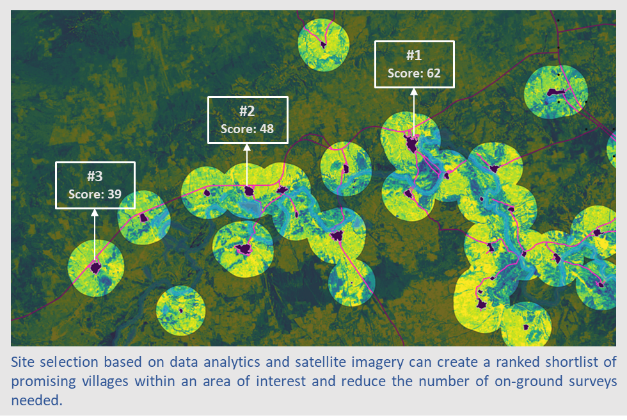Op-ed by Tobias Engelmeier, Founding and Managing Director, TFE Energy
Investments into mini-grids are often characterized by substantial risks, high transaction costs, long lead times and a lack of reliable data for planning and impact measurement. Digital solutions can help address these challenges and deliver the Sustainable Development Goal of universal access to energy (SDG7) faster and cheaper.
Over the past year, a team at TFE Energy researched into how the large-scale and often real-time collection, analysis and use of all kinds of datasets, enabled by the rapid, global technology shift called “digitalization,” is in the process of transforming the energy access industry. We screened over 200 companies and more than 100 investors, conducted nearly 50 interviews and collected 12 in-depth case studies on digital solutions. We recognize and are thankful for the great spirit of cooperation in the energy access community. It has been a hugely insightful journey for us and we hope our report on “Energy Access, Data and Digital Solutions” (link) is useful.

We clustered the solutions we found into four broad categories:
- Digital Planning uses different data sources (including satellite data) and algorithms to delineate off-grid areas, to support policy design, and to identify viable mini-grid sites. This helps better assess risks, right-size systems, accelerate project development and create a pipeline of projects at scale. Digital planning tools can be integrated: starting from country-wide least-cost-electrification analyses offered by MIT or KTH, then moving into a village-level analysis of off-grid areas, such as that by our own Village Data Analytics (VIDA) tool, and finally moving to initial grid layouts and costs.
- Digital Aggregation platforms facilitate investment into the off-grid space by standardizing and aggregating mini-grid projects and making them accessible to different stakeholders. This can significantly reduce transaction and operating costs and unlock new investment sources. Digital aggregation platforms come in two main forms: One is platforms that aggregate projects and link them to professional investors, regulators or subsidy providers (project aggregation platforms, such as Odyssey). The second are platforms that aggregate private investors and link them to companies or projects (crowdfunding platforms).
- Digital Operations concern the Internet of Things (IoT) environment around mini-grids. This includes remote monitoring solutions by companies such as SteamaCo, FernTech, AMMP or SparkMeter, which enable companies to collect data on their mini-grids. These are typically in difficult to reach locations and the ability to remotely identify and troubleshoot problems has greatly reduced operating costs. In addition, detailed information on user behavior allows companies to improve and customize their service offerings. Digital operations also include lockout technologies and devices that can be remotely controlled.
- Digital Payments technologies have been enabled by the high penetration of mobile phones, wide coverage of 2G cellular services and supportive policies for mobile money in some countries. Digital payments allow rural (often unbanked) customers to pay for services and products remotely and securely. This addresses the significant challenge of payment collection in rural, remote regions. In addition, energy access companies use digital payments data to leverage customer credit risk analytics to identify customers for upselling. Many of the innovations have been pioneered in the Solar Home System market, by companies such as Bboxx, Mobisol or Zola Electric, often supported by technology specialists such as Nithio or Angaza. They are now spilling over into the mini-grid segment.
As digital solutions become used more widely, and as the availability and reliability of data improves, there emerges a great opportunity for a more integrated and sector-wide approach: Taken together, the solutions can create the kind of data-based decision-making infrastructure need to unlock the many billions of dollars required to achieve SDG7. This is an effort for all the stakeholders. The recommendations section in the report suggests action points for each group. The full report can be downloaded here.
The full report can be downloaded here.

